The BRAWL² Tournament Challenge has been announced!
It starts May 12, and ends Oct 17. Let's see what you got!
https://polycount.com/discussion/237047/the-brawl²-tournament
It starts May 12, and ends Oct 17. Let's see what you got!
https://polycount.com/discussion/237047/the-brawl²-tournament
Spider Tank - Realtime
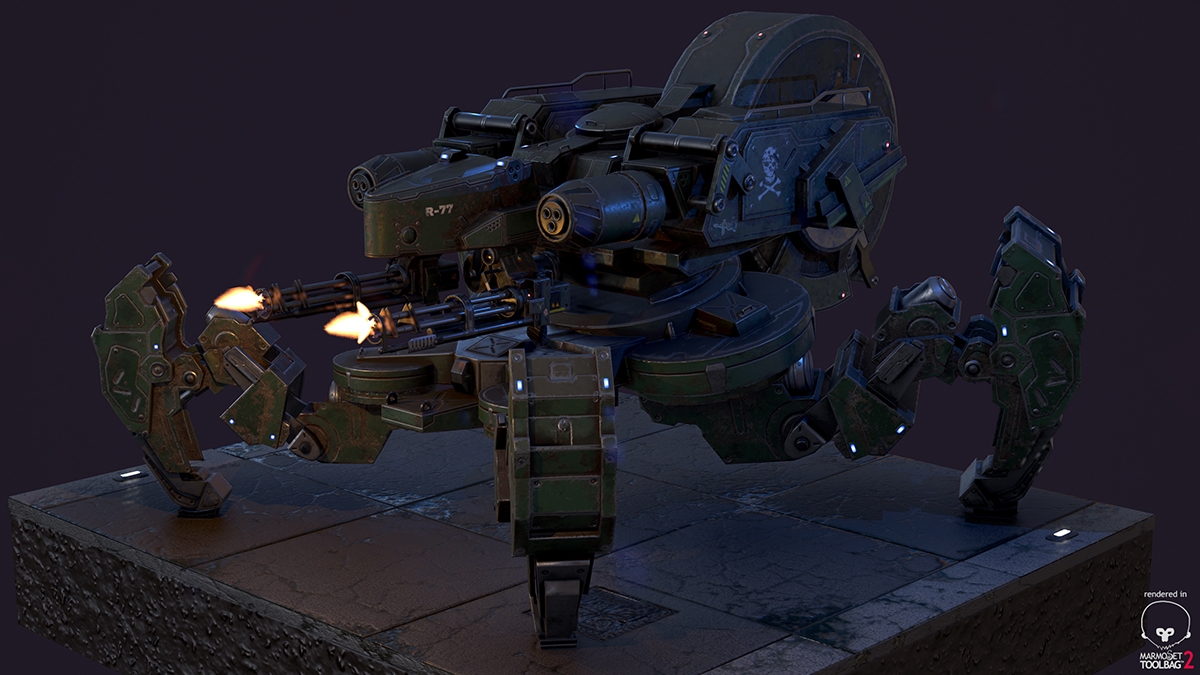
Hello Everyone,
my name is Raffaele Grande and this is my first post after long time I had joined this community.
Before you start reading, I would like to thank Fausto De Martini, who is the Concept Artist of this mech. As you might already know, he is an amazing artist and he creates super inspiring stuff.
This project started as a personal test to lay down my new real-time pipeline, based on the most recent techniques, such as PBR etc.
I first started very fast, managing to have a game ready model done within 5 days of my spare time. Using 3dsmax for the base mesh and high-res, Zbrush for the legs, Quixel DDO (later on Substance) for the texturing and Marmoset Toolbag for the look-dev.

At the time I had started, I decided to set my Specs quite low for such a huge tank, so it was just 15k tris and one 4k texture set.
But this was just the starting point, because then I realised I wanted to achieve something more aligned to the modern standards.
Long story short, I decided to give Substance a go to widen my knowledge in matter of parametric texturing.
I fell in love with this tool as much as Quixel DDO, just a different approach.
Talking about my approach from the very beginning. I found two references of the internet, Fausto did a great job because he did an actual 3D Concept, so I had the references from all the sides. It didn't take me long, to block it out (less than a day).
For the high-res, I decided to start from the leg, using Zbrush, since hard surfaces in Zbrush for me were quite a new thing. I was happy with the result (see below) but since I have already had the design, I thought, it would have been faster for me to do it straight away in 3dsmax. So did I.
Basically from now on all the models, both low and high-res, were created from the same starting proxy models. Then adding and deleting edge loops, I managed to get all the asset ready for the baking process.
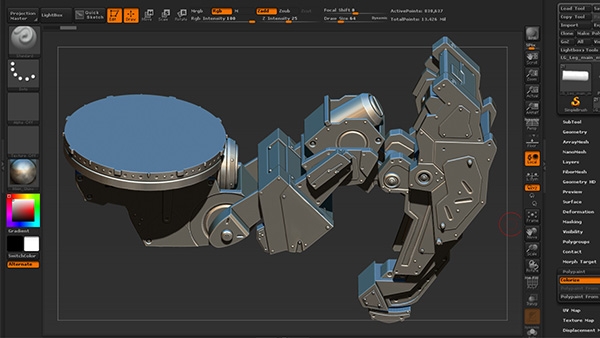
After a week of back and forth between 3dsmax and Substance, I've finally found my perfect pipeline to bake normals(more or less). What I really cared about, was to avoid that weird bubble effect on the normals, when you have flat surfaces joining at 90 degrees, but at the same time avoiding the "too sharp" look typical of lowpoly stuff. I realised that baking good normals, makes you really believe there are much more polygons than you actually have.
I have to say, Polycount is an unbelievable resource when comes to these studies. It was super helpful reading everything in this regard. You could write a entire book just on how to bake normal maps in the most correct way, case by case.
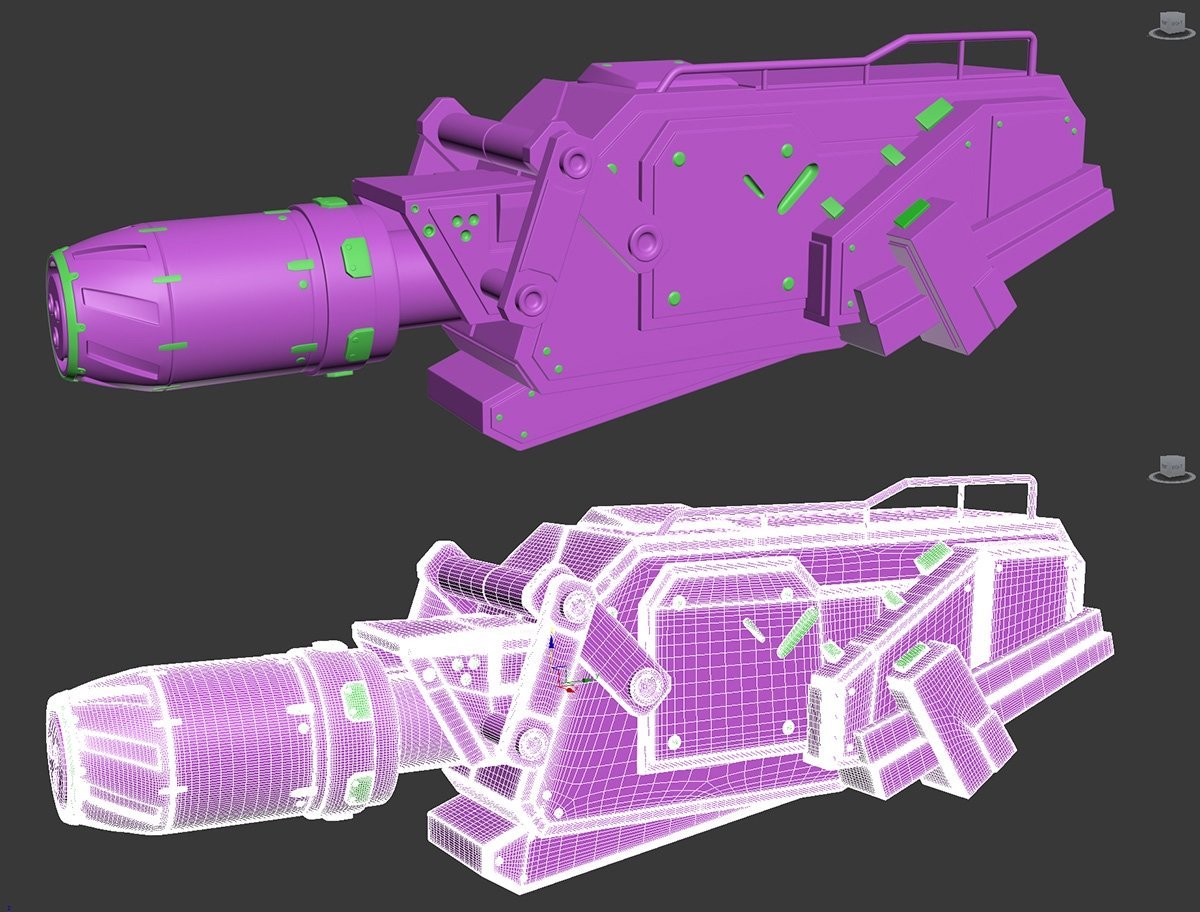
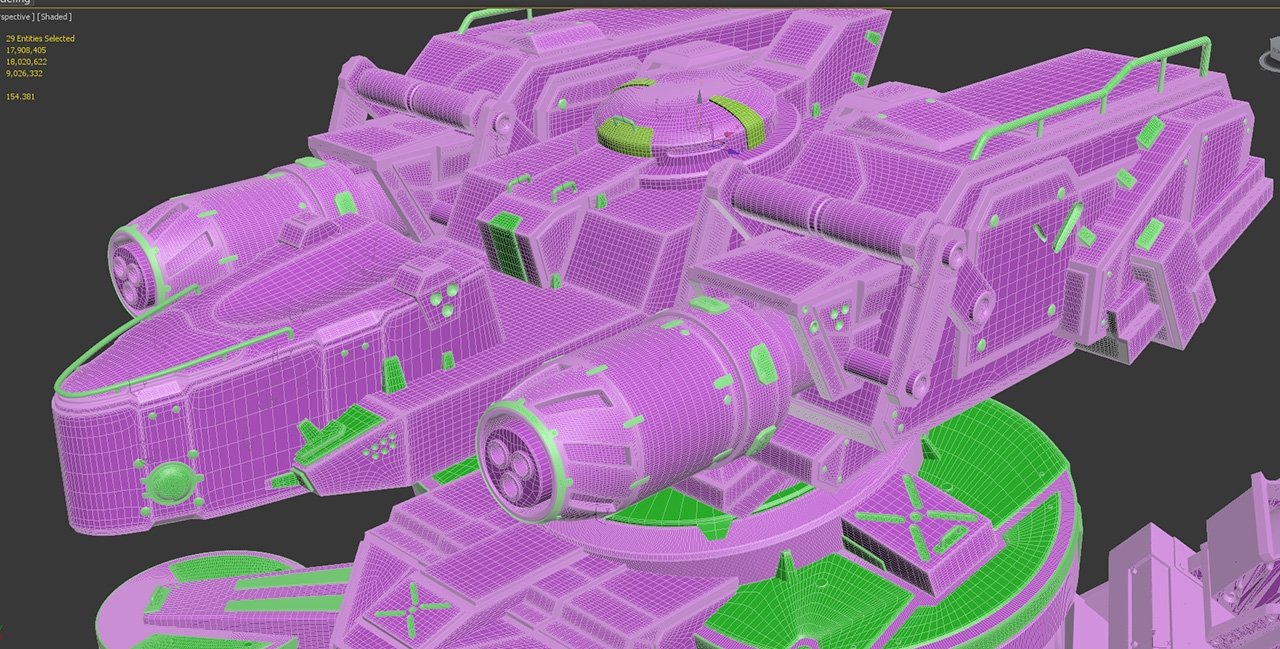
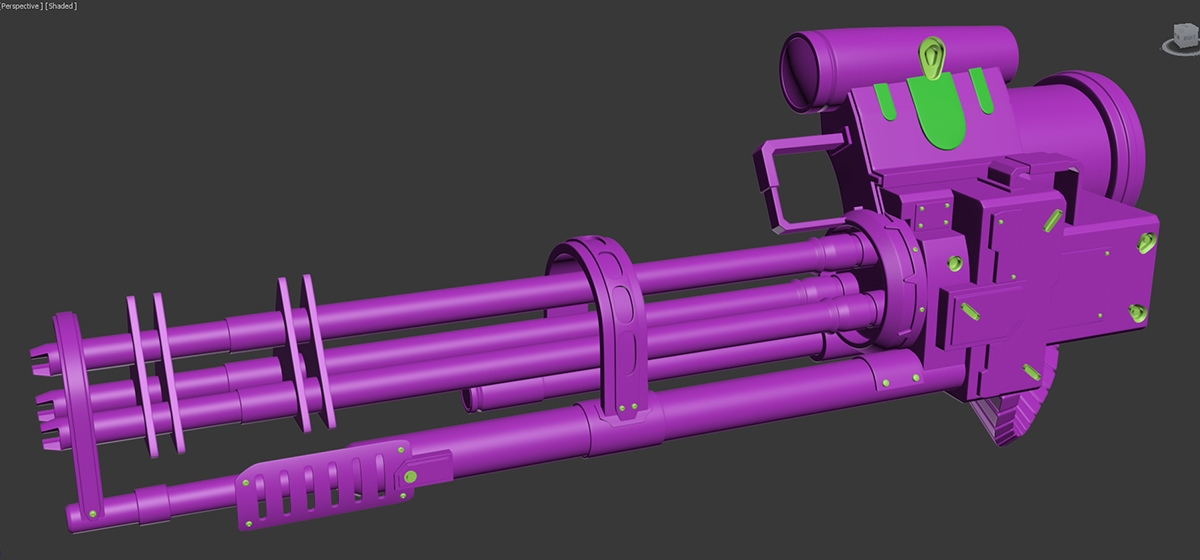
I had already estimated that the polygon count would have doubled from the very first stage, but again, I think it's still pretty reasonable for such a model.
Infact I ended up with a 35.184 Triangles and 6x4k texture sets that work fine even downscaling them to 2k each.
Here below a few more screenshots from Marmoset:
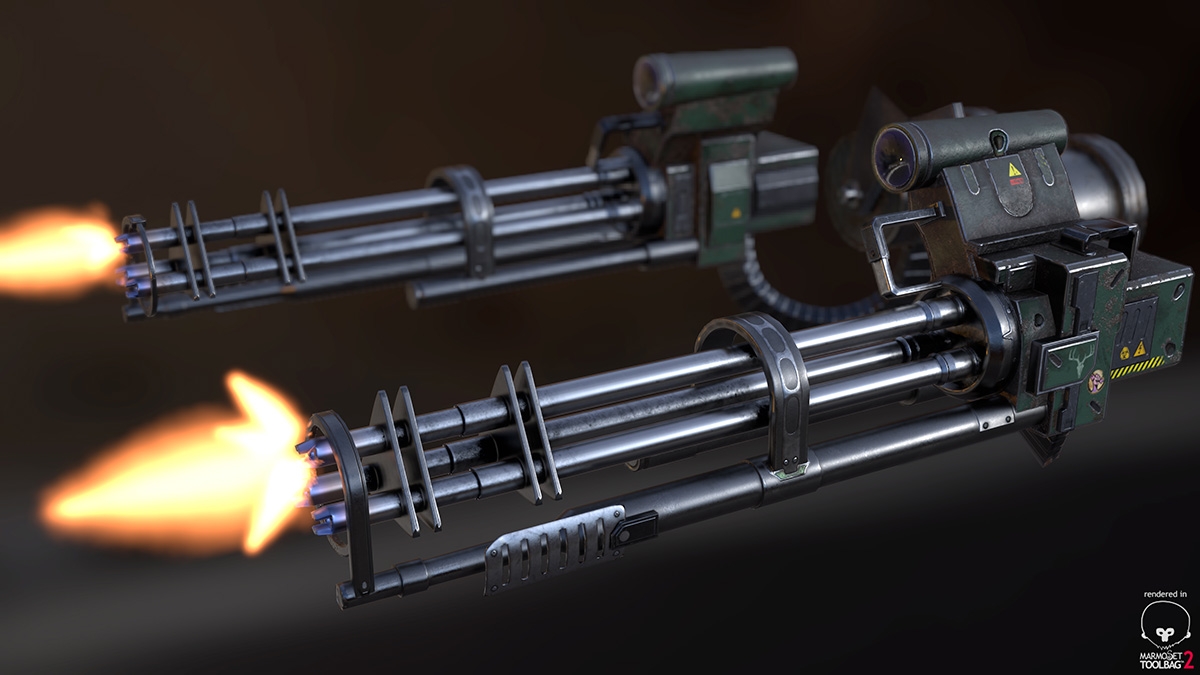
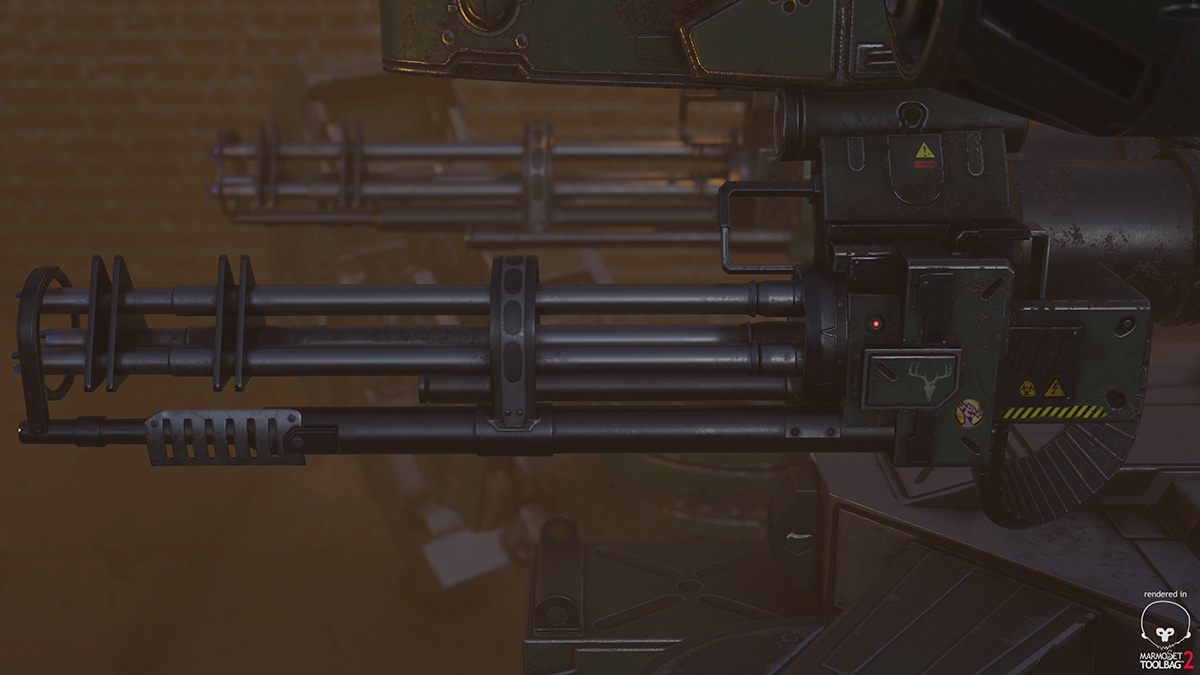
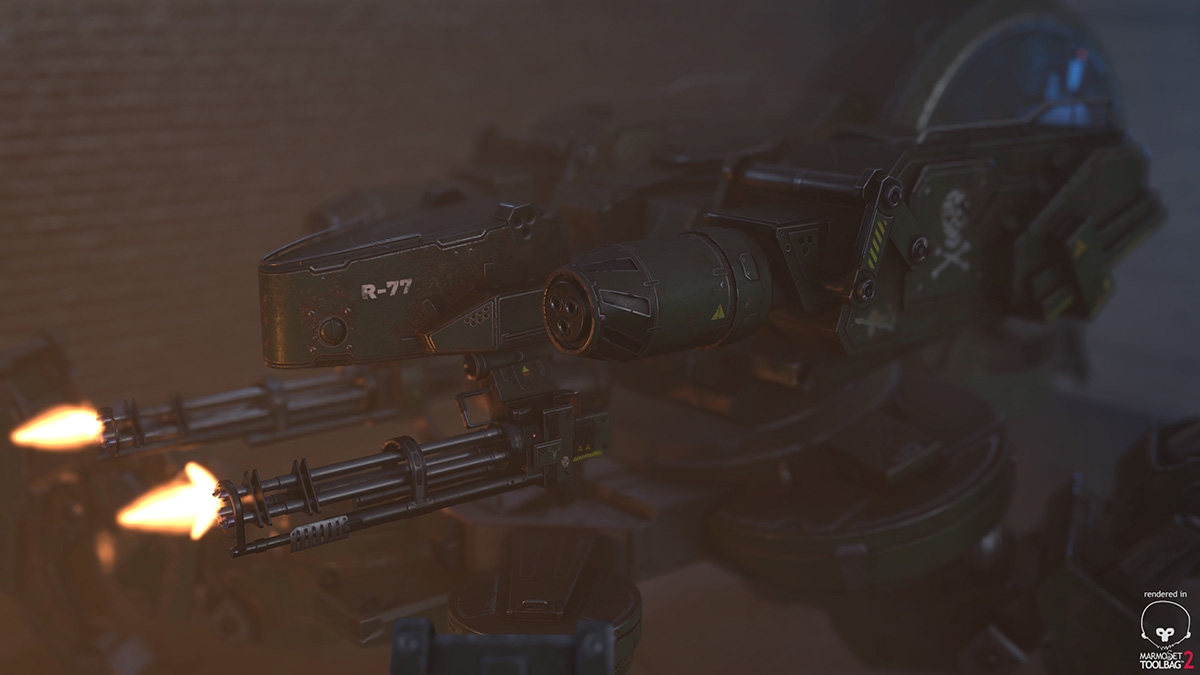
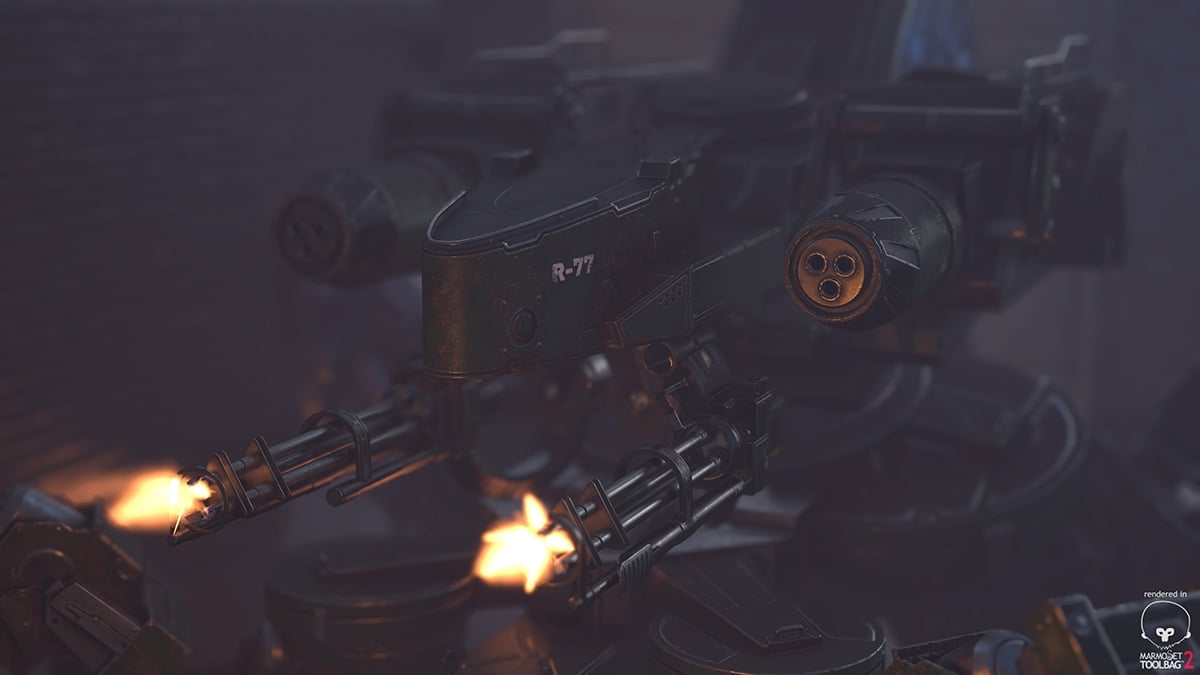
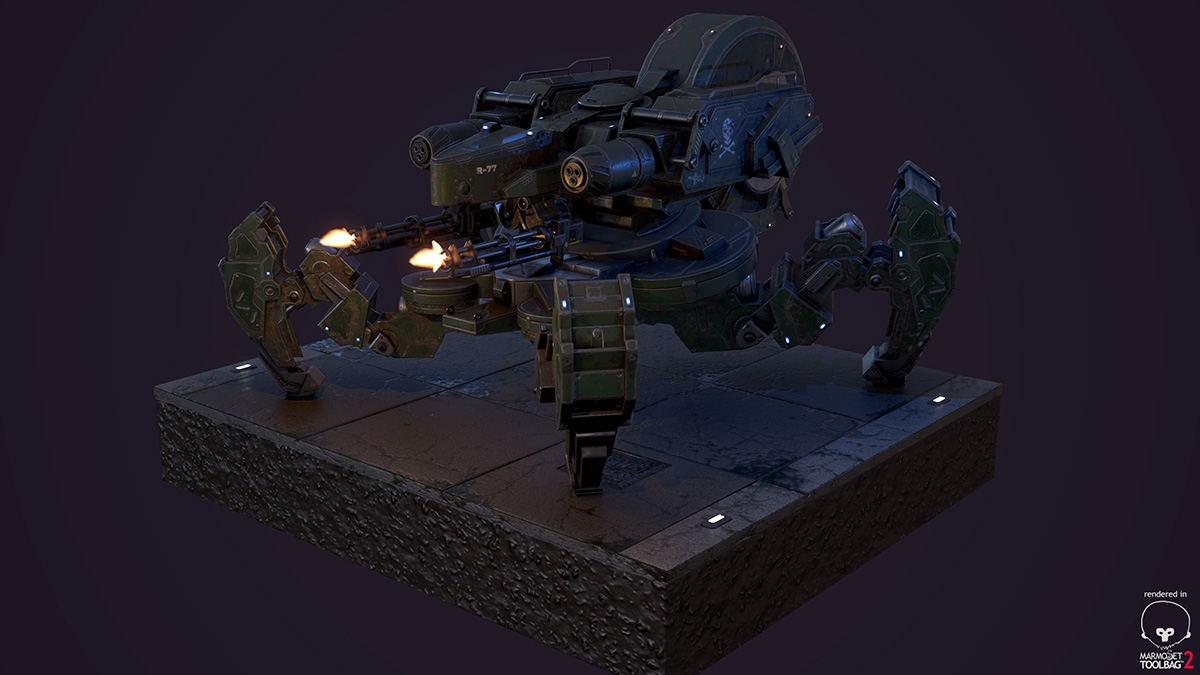
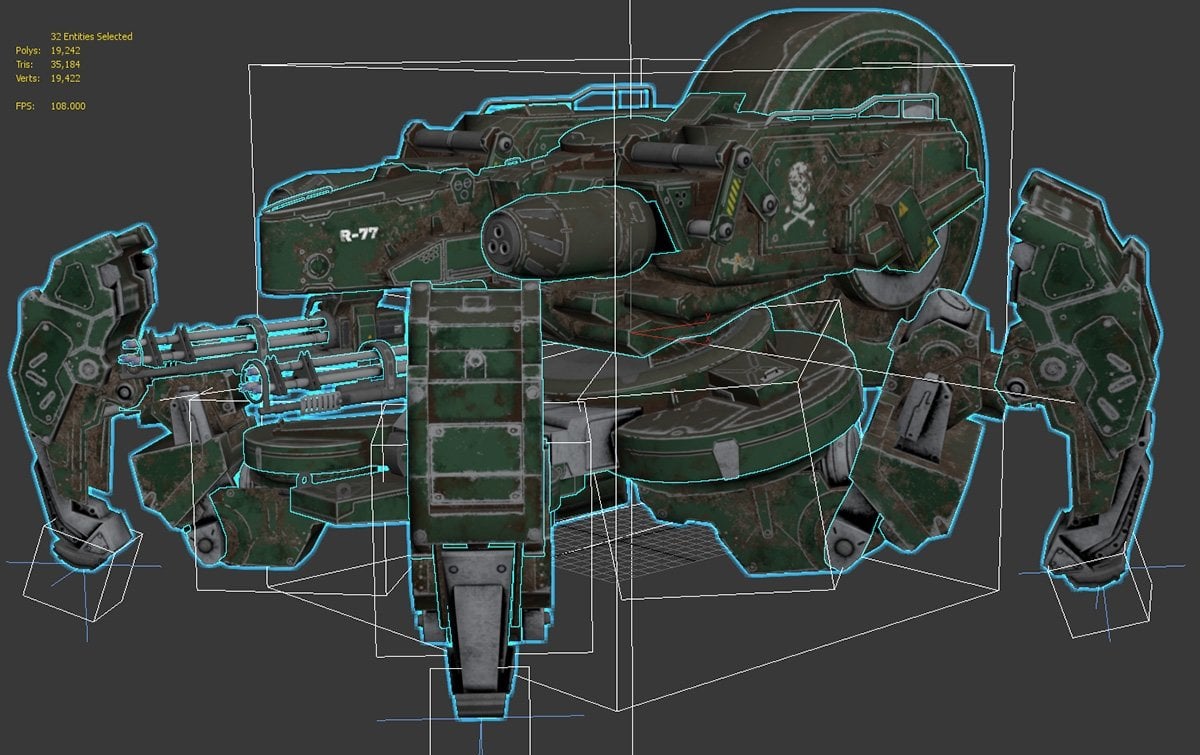
I've also created a little timelapse in Marmoset with a turntable at the end:
https://www.youtube.com/watch?v=7aH8aIGEU3E
And this it the project on ArtStation:
https://www.artstation.com/artwork/n683E
On my Portfolio you can also find the Marmoset file, unfortunately I had to downgrade the textures quite a bit to keep it within the 32MB allowed:
http://http//www.raffaelegrande.com/?portfolio=spider-tank-realtime-from-fausto-de-martinis-concept
I really hope you found it interesting in some way, and feel free to comment. I would really love to hear your thoughts.
In my future plans there is some VR in Unreal, and I would like to share something soon (I hope!).
Cheers,
Raff
